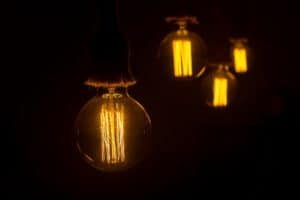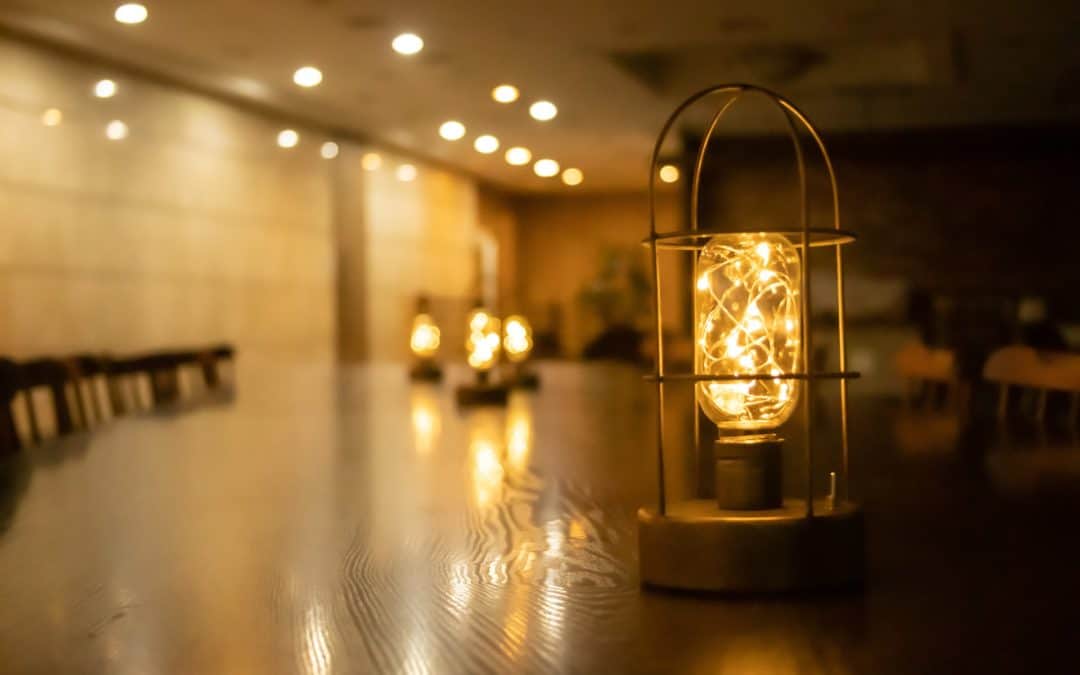While many enjoy decorating outdoors with lighting at any time of the year, there’s just a different level of excitement when you accessorize and decorate with lights during winter. If that’s also your case, you can benefit from useful tips on using outdoor lighting around your home during winter.
It could be the Christmas season vibe, daylight savings, or just because the lights go with the snowy background — whatever it is that makes outdoor lighting more fun to do during winter, you can use these tips for a safe and wonderful outcome.

Use LED Lights
If possible, switch to LED lights during the cold months. Between CFL and LED light bulbs, there are plenty of choices for outdoor lighting. However, LED lights are better to use in winter.
Not only LED lights are more energy-efficient, they are also longer-lasting. But why are LED lights better to use than other types during the cold season?
LED lights do not need heat to work. In fact, they thrive in cold weather, producing brighter lights. They do not produce as much heat, too, which is the problem for other types of bulbs when used in cold weather.
LEDs are not like CFL bulbs that have the tendency to not light up or explode with a sudden drop in temperature.
Place Light Fixtures in Strategic Locations
You could be decorating your outdoor space with lights to meet a specific theme or you just want the house to stand out with lights. Regardless, you should install your light fixtures strategically.
This is a way to maximize their use, improve safety, and at the same time cut energy costs.
One example is placing light fixtures along a path walk. This beautifies the area while at the same time, serves as a guide as you walk to your doorstep. Another way is by installing light fixtures in dark areas of the yard.
Aside from safety purposes, this is a way to give life to the dull area, inviting family members or activities in that space. You might need professional installers when adding a system of light fixtures for proper wiring design around your home.
Clean the Lenses
Lenses could get dirty in time and make the lights appear dim or cloudy due to mineral deposits and dirt. If you want the lights to maintain their brightness and effect, then have them cleaned periodically.
Some types of light fixtures may require cleaning more often. For example, LED lights need cleaning every after a winter storm.
Unlike halogen lights that produce more heat, the LED counterparts do not emit too much heat. In return, LED lights could not easily melt the snow when they are covered with it.
When cleaning the light fixtures, you can use a non-abrasive cloth to clean the surfaces of lenses. After a winter storm, make sure to clear any snow and dirt that blocks the light fixtures.
Replace Burned Out Bulbs
Burned out bulbs are worse than dirty light fixtures. They ruin the winter curb appeal of the outdoor space and could even put home safety at risk. Also, you should ensure a well-lit outdoor space during the winter as the nights are typically longer during these months.
Schedule a day to check your lighting fixtures for burned out bulbs, especially those that are too small to even notice. Replace bulbs in exposed areas as soon as possible. It’s best to have spare bulbs for your main lighting fixtures so you can replace them any time necessary.
Watch Out for Exposed Wires
Did you know that about 50 percent of residential fires in the US are caused by electrical problems? More surprisingly, most of these incidents occurred during the winter months, from November-February, when there is an increased use of lighting and heating systems.
That said, you should never take routine checks for granted. Aside from fires, they could also cause electrical shocks. It only takes 10 milliamps to produce a painful shock.
Now think about how fatal things could get with a higher amount of current under a wet environment. Check for exposed wires and let the professionals fix the problem.
Always take precautionary measures when handling electrical parts. For some replacements and fixes, do not hesitate to call a certified electrician to avoid accidents and injuries.
Conclusion
Temperature is one consideration when using outdoor lighting during winter. Switch to LED lights if possible because they thrive in cold weather. Still, you should conduct checks and proper maintenance to ensure your lights are all working properly and not risking everyone’s safety.

Recent Comments